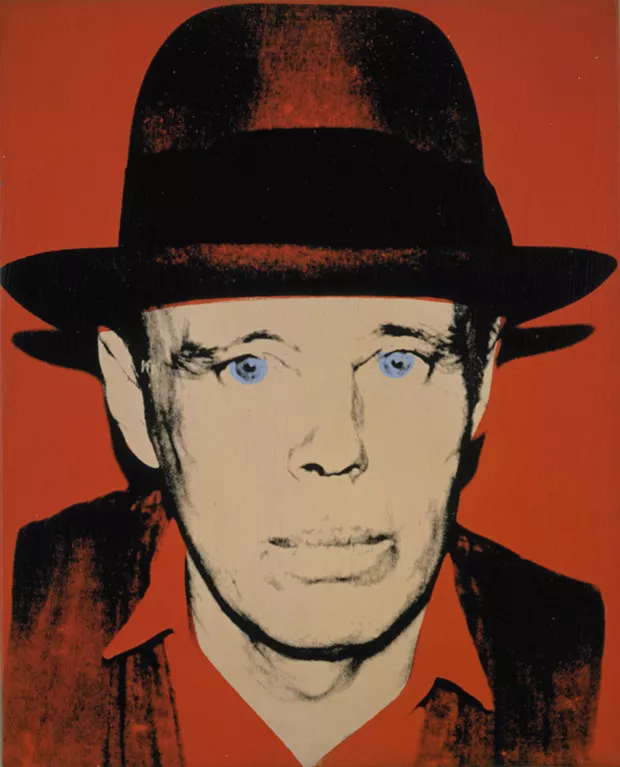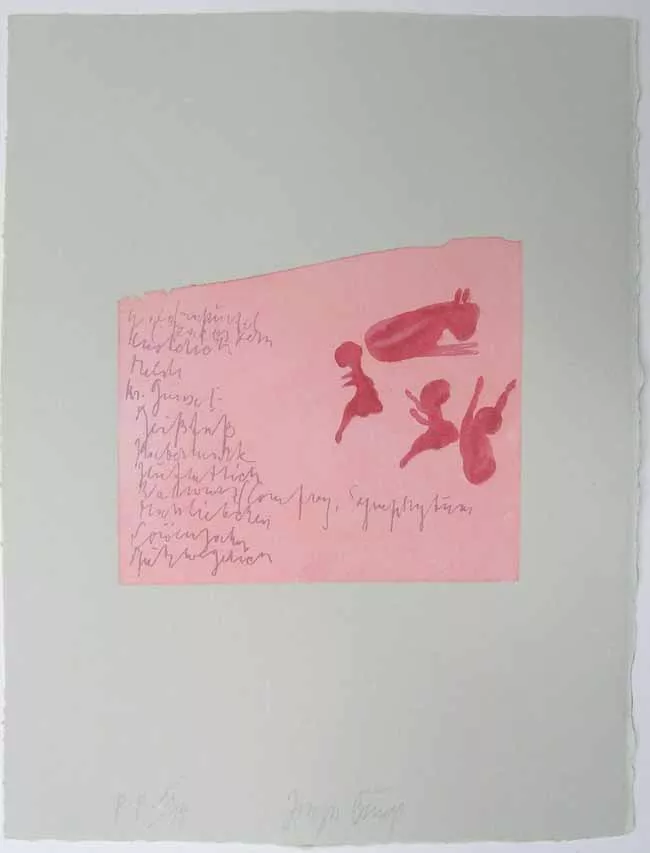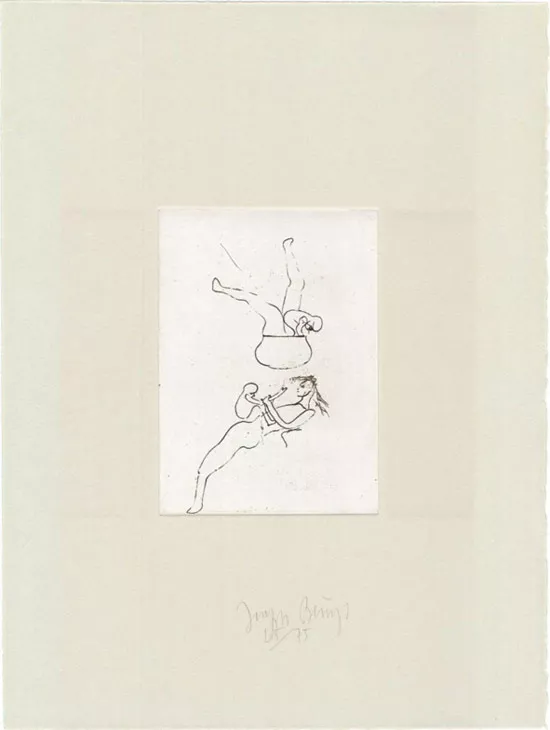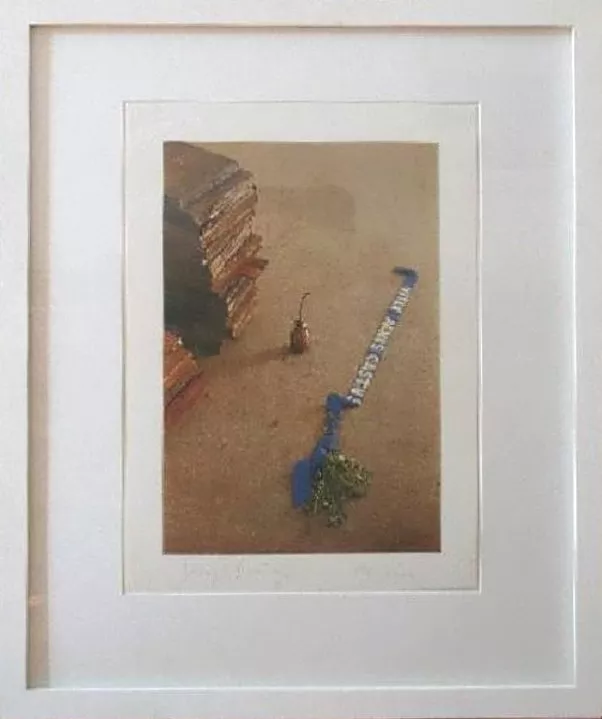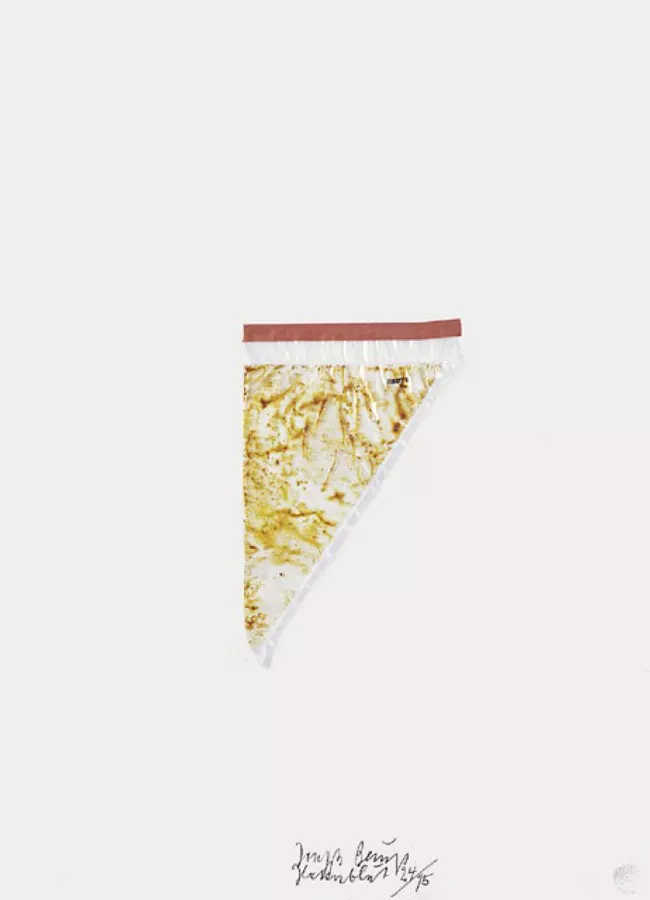About Joseph Beuys
Joseph Beuys (1921 – Krefeld, Germany – 1986 – Düsseldorf, Germany)
Beuys was an alchemist, social visionary and artist. In 1961, he became Professor of Monumental Sculpture at the Düsseldorf Academy, but was expelled in 1972. With his first gallery “action” in 1965,Teaching Paintings to a Dead Hare,his international reputation began to grow. In 1979, he was honored with a major retrospective at the Guggenheim Museum, New York City. He died just after receiving the prestigious Lehmbruck Prize and left behind numerous large-scale installations and site works, hundreds of provocative multiples and small objects, thousands of drawings, documented social sculpture forums about energy, new money forms and direct democracy, and above all, a methodology and ideas such as “parallel process” and “social sculpture.”As an active in Europe and the United States from the 1950s through the early 1980s, he came to be loosely associated with that era’s international, proto-Conceptual artmovement,Fluxus. Beuys’s diverse body of work ranges from traditional media of drawing, painting, and sculpture, to process-oriented, or time-based “action” art. Joseph Beuys ranks amongst the most radical and influential artists to emerge during the second half of the twentieth century. An enigmatic figure who was never one to shun controversy, Beuys strove to establish a truly democratic approach towards making and presenting art. Beuys oeuvre is a part of a larger, philosophically based practice emphasizing direct democracy, free access to education, and the restructuring of society to meet ecological requirements. The peculiar poetry of the materials Beuys used―felt, grease, honey, wax, copper, and sulfur―emerges along with the gentle melancholy that suffuses the work.
Joseph Beuys: ‘ Solidarnosc incarnat (Hungertuch)’, 1981, Farboffsetlithographie / glatter Karton, Auflage 50 Exemplare, hier Exemplar 22/50, von Joseph Beuys, Felix Droese und Johannes Stüttgen signiert, numeriert und gestempelt; 84 x 59,5 cm. Schellmann 376. Am oberen Rand an zwei Stellen auf Unterlagekarton aufgelegt. Diese Offsetlithographie wurde zur Unterstützung der polnischen freien Gewerkschaft Solidarnosc herausgegeben und zeigt die Arbeit “Hungertuch” des Künstlers Felix Droese.
Joseph Beuys. »Zirkulationszeit: Topfspiel«. Normalausgabe. Radierung, Schellmann 424. Ed. Grafos Vaduz. 15,7 x 11,5 cm (Platte) auf 38 x 28,5 cm (Blatt), Rives gris, handsigniert, nummeriert, Aufl. 75 Expl.
Joseph Beuys:“Vitex agnus castus” 1973, Colour offset on cardboard, hansigned in pencil on the front, left, numbered, edition of 1000, size: 60.5 x 44 cm. Publisher: Edition Staeck, Heidelberg and Modern Art Agency, Naples. Perfect condition, in a white wooden frame with passepartout. Price € 1.800,- Order here !
Joseph Beuys: ‘Hasenblut’, 1971/79, Plastic bag with hare´s blood, mounted on white board with sticking plaster. Signed and numbered. Edition of 45. Print : 62 x 45 cm (24 x 17 in.). Price upon request
